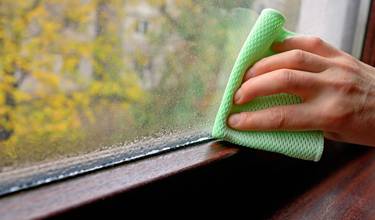Asthma, which is a long-term inflammatory disease of the airways, is characterised by shortness of breath to varying degrees. This characteristic shortness of breath is a result of a narrowing of the airways, and this state can be triggered by allergens in the air. By minimising the exposure to these allergens, it is easier for people suffering from asthma to control the disease.
Regardless of which allergens trigger your asthma symptoms, eliminating all of them is practically impossible. It is, however, possible to reduce the frequency of the asthma attacks by eliminating some of the allergens. The indoor air quality plays an important role in the everyday life of an asthma patient, but also in the development of the disease in healthy people. Some commonly known elements which can trigger asthma include house-dust mites, pets, mould fungus, and tobacco smoke. It is of course very important to minimise these allergens to alleviate the symptoms for the asthma patient in question.
In addition to those mentioned above, there are a number of less known factors in the home which can potentially play a role for asthma patients. As an example, open fireplaces can worsen the symptoms for some patients as the firewood releases small particles which can increase the inflammation of the airways when inhaled. Some patients react to new carpets and furniture, as a chemical substance called formaldehyde is often used in the manufacturing process. What’s characteristic about this chemical is that it is transformed into a gas at room temperature. There is no concrete evidence suggesting that formaldehyde triggers asthma attacks, but some patients say that the smell of new carpets and furniture worsens their symptoms.
Considering the factors mentioned above, one might think that cleaning would get rid of the allergens. This is true to some degree, but some cleaning products might actually do more harm than good. Many of these products contain chemicals with the same characteristics as formaldehyde. Cleaning products containing these chemicals include air fresheners, carpet cleaning products and oven cleaner. In addition, it is beneficial to use liquid cleaning products instead of cleaning sprays, as the chemicals in sprays are more easily inhaled. Sometimes the mere smell of a cleaning product is enough to trigger symptoms in some people.
Similar to carpets and furniture are various interior decoration products. Some of these contain chemicals like formaldehyde as well, and these may therefore also trigger symptoms in some people. These chemicals are found in paint, glue, varnish and various other products for interior decoration. The condition of the home is central when it comes to asthma triggers. Scientists have found a connection between poor housing conditions and asthma, and therefore it is important to resolve issues regarding humidity, mould fungus and poor ventilation as quickly as possible. When resolving the issues, it is important to use materials that don’t trigger asthma symptoms. As an example, some types of insulation might trigger asthma symptoms, and in general, dust from construction work might irritate the airways, thus worsening symptoms.
One initiative, which many asthma patients have benefited from, is the use of air filters. These remove particles which function as allergens, such as dust particles from pets, fungal spores and particles from tobacco smoke. Several asthma patients report that the use of filters alleviate their symptoms. Research indicates that the filters can alleviate asthma symptoms if they are used in combination with other approaches to reduce symptoms. Regular ventilation is beneficial as well. By ventilating, the air humidity is reduced, and this in turn leads to less house-dust mites and fungal spores. Furthermore, gases arising from cooking and from heating the house are removed.
Sources:
1. http://www.ncbi.nlm.nih.gov/pmc/articles/PMC4110514/
2. https://www.asthma.org.uk/advice/triggers/indoor-environment/








